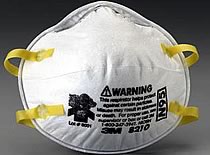
Information on the effectiveness of facemasks and respirators for decreasing the risk of influenza infection in community settings is extremely limited. Thus, it is difficult to assess their potential effectiveness in decreasing the risk of novel influenza A (H1N1) virus transmission in these settings. In the absence of clear scientific data, the interim recommendations below have been developed on the basis of public health judgment, the historical use of facemasks and respirators in other settings for preventing transmission of influenza and other respiratory viruses, and on current information on the spread and severity of the novel influenza A (H1N1) virus.
In areas with confirmed human cases of novel influenza A (H1N1) virus infection, the risk for infection can be reduced through a combination of actions. No single action will provide complete protection, but an approach combining the following steps can help decrease the likelihood of transmission. These recommended actions are:
- Wash hands frequently with soap and water or use alcohol-based hand cleaner when soap and water are not available.
- Cover your mouth and nose with a tissue when coughing or sneezing.
- Avoid touching your eyes, nose and mouth
- People who are sick with an influenza-like illness should stay home and minimize contact with others, including avoiding travel, for 7 days after their symptoms begin or until they have been symptom-free for 24 hours, whichever is longer.
- Avoid close contact (i.e. being within about 6 feet) with persons with influenza-like illness.
In addition, influenza antiviral medications are an important tool for the treatment and prevention of influenza, including novel H1N1.http://www.cdc.gov/h1n1flu/masks.htm